Wehrmacht
Showing 14341–14400 of 17213 results
-
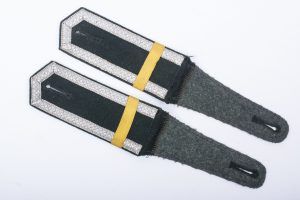
Heer pre war pointed shoulderstraps for a Unteroffizier
Beautiful pre war pointed style M35 shoulder straps for a Unteroffizier. The straps come with the period attached yellow braids most probably indicating he was part of the Aufklärung section.
-
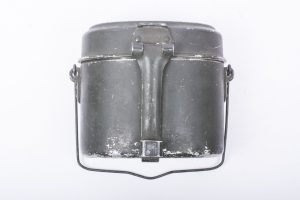
M31 Messkit marked VDNS37
A very nice VDNS 37 marked M31 messkit indicating production by Vereinigte Deutsche Nickelwerke/Nickel-und Stahlwerke, Schwerte. A very nice pre war messkit with 80% of its original factory paint remaining.
-
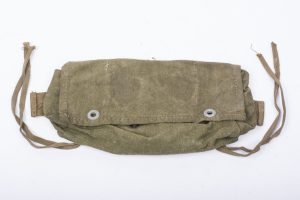
A-frame pouch in good used condition
A very nice lightly used A-frame pouch in very good condition. Nicely marked and dated inside.
-
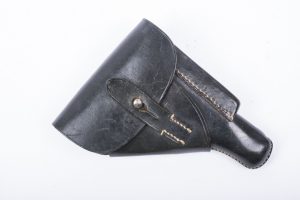
Rare Walther PP holster marked AKAH
Beautiful original Walther PP holster manufactured by AKAH in the rare leading edge design. The holster is in very good unissued condition and it would be very hard to upgrade.
-

Tan vinyl G43 pouch marked ros 1944
A tan vinyl G43 magazine pouch. This pouch is marked ros 1944 indication production by E. G. Leuner, Bautzen. A nice G43 pouch in very good condition!
-
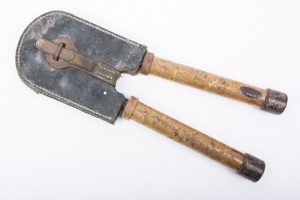
Short pioneer wire cutters with short presstoff pouch
A extremely rare short presstoff carrier complete with the short wire cutters. The pouch is made of presstoff. The short wire cutter pouches made out of Presstoff are extremely rare!
-
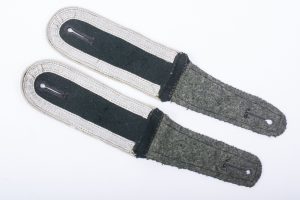
M36 NCO shoulderstraps for Unteroffizier Infanterie
Textbook original pair of M36 shouldestraps for a Unteroffizier der Infanterie. Nice lightly worn condition and hard to find!
-
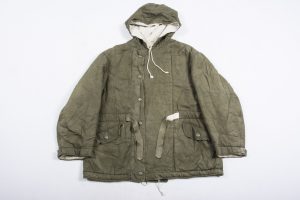
First model reversible manufactured in Wirtschaftsamt Litzmannstadt
Textbook first pattern green/grey reversible parka marked Wirtschaftsamt Litzmannstadt and dated 1942. Nice size 2, perfect for a mannequin. Very hard to find in this condition!
-
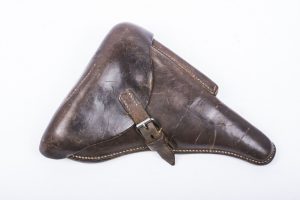
Brown P08 Luger holster marked Gebrüder Klinge Dresden 1937
A textbook brown P08 Luger holster in very good condition. Nicely marked Gebrüder Klinge Dresden 1937. The holster is complete with all loops, straps and buckle. The leather is supple and not dry. Hard to upgrade this brown holster!
-
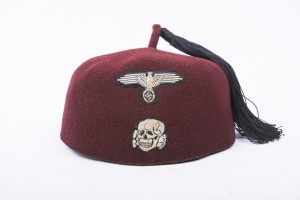
Maroon Waffen-SS Fez
Scarce original Waffen-SS maroon Fez for the 13. Gebirgsdivision der Waffen-SS ‘Handschar’. The Fez is in good used condition and retains both wartime factory sewn skull and eagle. The leather sweatband is partially loose, but this seems to be a thing with all of these. The Fez is in very good condition and would be hard to upgrade!
-
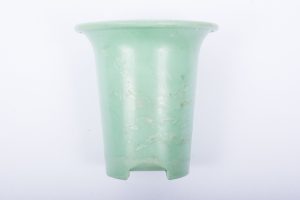
Rare green bakelite canteen cup
Very rare original speckled(!) green bakelite canteen cup in very good condition. Belongs in any canteen collection!
-
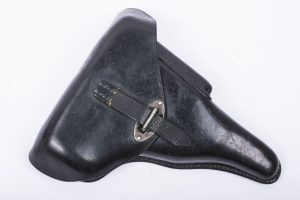
P38 hardshell holster
A very nice lightly worn P38 hardshell holster. Nicely marked, unrestored holster in very good condition!
-
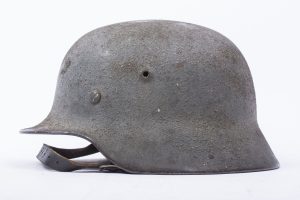
SE64 M40 single decal Heer sawdust camouflage helmet
Excellent SE64 M40 sawdust camouflage helmet with its Heer decal peaking through the paint. The helmet is a great, untouched example marked SE64 indicating production by Sächsische Emaillier und Stanzwerke A.G. The helmet is nicely unit or initial marked in the rear skirt giving a slight opportunity to further research. The helmets exterior is nicely covered in the thick textured sawdust camouflage paint leaving a small portion of the Heer decal peaking through the paint. A killer example of a sawdust camouflage helmet in great condition!
-
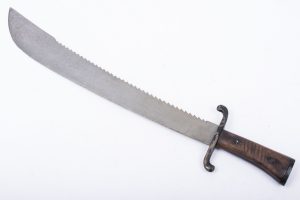
Rare Luftwaffe survival machete
Scarce original Luftwaffe issue survival Machete. These where issued with the bigger planes together with a survival kit containing flares, rations and other items. The Machete is in used but good condition complete with its original saw backed blade.
-
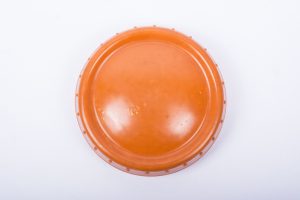
Orange bakelite butterdish
Nice original butterdish in good condition. Theres a small crack in the bakelite but its in one piece.
-
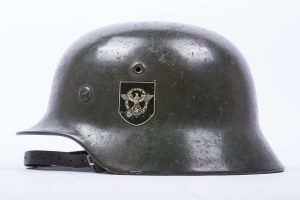
SE64 M40 double decal Polizei helmet
Excellent and textbook example of a M40 Polizei helmet, made to M35 specs. The shell is marked SE64 indicating production by Sächsische Emaillier und Stanzwerke A.G. The helmet is a rarer example being made to the M35 specs; one of the first made with the M40 shell and its factory installed zinc single banded liner. The helmet retains its factory applied smooth green paint up to 90% with both decals in excellent condition. The dome of the helmet retains a name. Very nice and textbook example of a Polizei helmet that would be very hard to upgrade!
-

Luftwaffe navigator DR2 Dreieckrechner
A nice Luftwaffe DR2 Dreieckrechner navigational computer. These 15cm discs where necessary in navigating with maps and coordinates. Typically carried by Luftwaffe aircrew. Nicely marked Dennert & Pappe and dated 1941 and in very good condition.
-
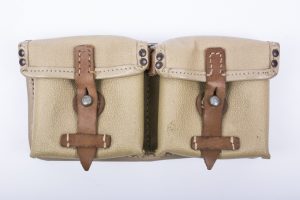
Tan vinyl G43 pouch marked ros 1944
A tan vinyl G43 magazine pouch. This pouch is marked ros 1944 indication production by E. G. Leuner, Bautzen. A nice G43 pouch in very good condition!
-
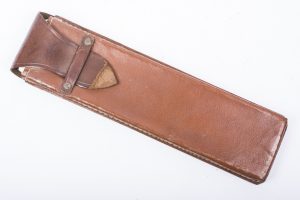
Complete Artillerie-Rechenstab in Presstoff pouch
Sale!Rare complete Artillerie-Rechenstab der deutschen Wehrmacht in its original Presstoff pouch. The calculator is in good working condition and nicely marked CME indicating production by Gebr. Wichmann, Berlin.
-
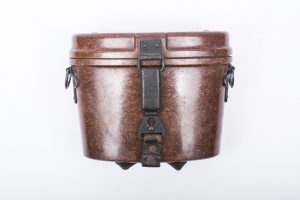
Speckled brown bakelite 6×30 Dienstglas container
A stunning speckled brown bakelite 6×30 binocular case. Later in the war when the Germans ran out of pigment for bakelite they switched over to different fillers. Sawdust was one of the filling materials used, creating a interesting speckled finish. The brown bakelite dienstglas containers where mostly found with tan 6×30 binoculars. The case is in very good, undamaged condition and has a very aesthetic and vibrant light brown colour which would nicely attribute a late war uniform setup.
-
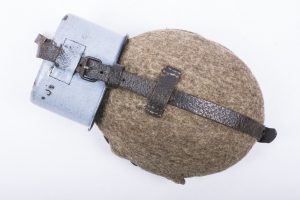
Rare blue enameled M42 canteen by Schindler or Deutsche Emailwarenfabrik (DEF)
Messkits and canteens enameled in these colours are attributed to be made by the Deutsche Emailwarenfabrik (DEF) run by Oskar Schindler. Messkits and canteens, unmarked, in these specific colours have been found in the old factory storage of the former DEF. There are several other makers of enameled steel canteens and messkits but they all carry different characteristic features such as markings or specific colours. No other maker utilizes these light gray and blue colours and lacks markings. The light blue “wash” on top of the enamel is one of the typical features. Rare to find combination!
-
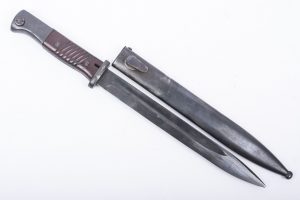
Matching K98 bayonet marked 43 asw
A nice matching bayonet marked 43 asw indicating production by E. & F. Horster & Co. Solingen. The blade has not been sharpened or polished retaining up to 95% of its original blueing. The tip is slightly damaged; please see the detailed close up. The bayonet is matching to its scabbard with the serial 2497 and has nice clean red bakelite grips and would be very hard to upgrade!
-
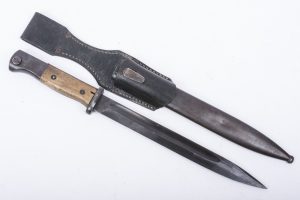
Matching K98 bayonet marked 43 asw
Hard to upgrade matching bayonet marked 43 asw indicating production by E. & F. Horster & Co. Solingen. The bayonet is matching to its scabbard with the serial 3389 and has nice clean wooden grips and its original leather frog. The bayonet is in very good uncleaned and matching (!) condition.
-
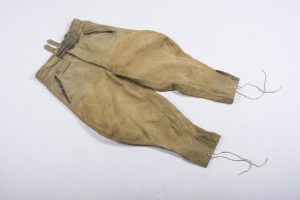
Textbook Afrikakorps trousers
Textbook tan tropical Heer trousers for the Afrikakorps in good worn condition.
-

US WWII D-Day assault vest
A scarce and iconic Assault Vest as worn during D-day by members of the 1st, 4th, and 29th Infantry Divisions as well as the 2nd Ranger Battalion. The vest is a stunning original mint example marked Harian 1944 and in a good size Medium to fit most if not all modern mannequins. There are no repairs or modifications on the vest. The vest is a textbook example in mint condition in OD3, would be impossible to upgrade and the centerpiece for any D-Day themed collection!
-
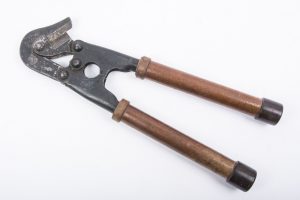
German pioneer wire cutters dated 1938
Nice pre war German pioneer wirecutters marked Hugo Linde Deltawerk Solingen 1938.
-
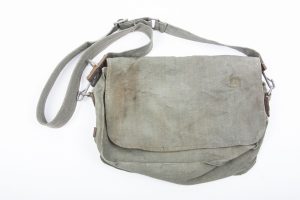
Female M31 Brotbeutel for Helferinnen
A very nice M31 breadbag for Helferinnen in the Wehrmacht. Rare to find!
-
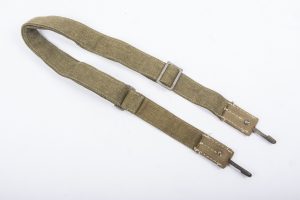
Tropical breadbag strap
Very nice original tropical breadbag strap.
-
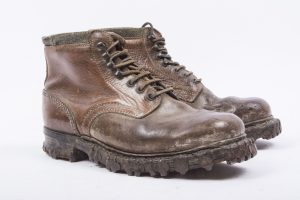
Lightbrown Gebirgsjäger boots
A nice pair of Gebirgsjäger boots in good used condition. The size is a nice average, not too small or big. The wool on the top is in good condition and the set comes with the original leather laces. A nice pair to finish a mannequin with!
-

Late war Waffen-SS erbsentarn trousers
Late war Waffen-SS Erbsentarn camouflage trousers. The trousers are a very good substitute if you don’t want to spend twice the price but need a original pair for a mannequin. The trousers are in worn condition and have been washed, at one point where dyed blue. The trousers retain its original glass and metal buttons and is marked in the rear as it should. The size is a medium fitting most modern mannequins.
-
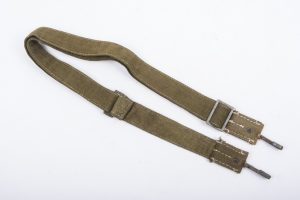
Tropical breadbag strap
Very nice original tropical breadbag strap
-
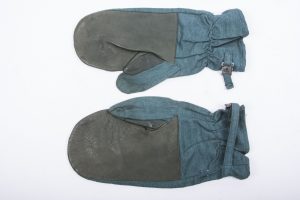
Polizei issue mittens
Late war Polizei issue mittens in mint condition.
-
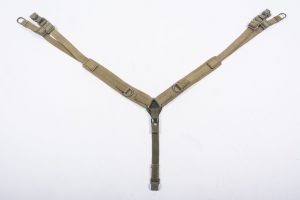
Tropical Y-straps marked Bruno Leuner 1942 Bretnig
A textbook mint tropical Y-strap marked Bruno Leuner 1942 Bretnig. Impossible to upgrade!
-
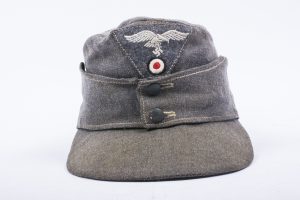
Luftwaffe M43 cap in lightweight material marked RBNR
Stunning untouched Luftwaffe M43 cap marked RBNR 0/0454/. The cap retains its factory sewn Luftwaffe trapezoid. Very rare original lightweight Luftwaffe M43 cap in very good used condition.
-
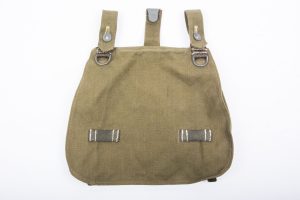
M31 breadbag with rayon straps marked RBNr.0/0750/3572
A stunning mint breadbag marked RBNr.0/0750/3572. Interestingly the straps are made of webbing and rayon, a uncommon and very late war feature. Exceptional breadbag!
-
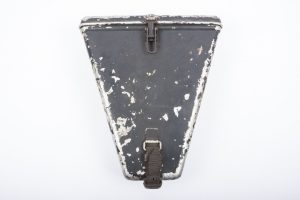
Luftwaffe Entfernungsmesser case for shoulder supports
A very nice aluminum transport case for the Entfernungsmesser shoulder supports. The case retains its original factory paint and internal dividers. Nice piece to complete your entfernungsmesser!
-
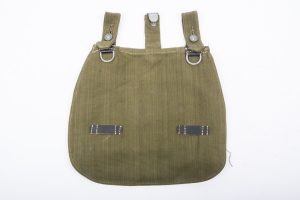
Mint unissued breadbag
Superb breadbag in mint condition. For sure the best one I’ve had to offer. If you just want one mint example and want the nicest one out there; this is it.
-
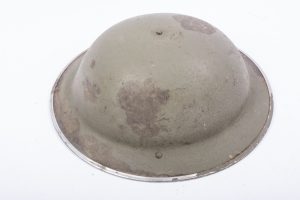
British MKII helmet
Very nice 1943 dated MKII helmet in very good used condition.
-
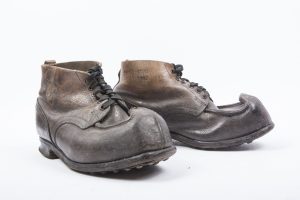
Rare Waffen-SS Gebirgsjäger issue ski boots
Sale!Scarce original Waffen-ᛋᛋ Gebirgsjäger issue boots in very good used condition. The boots come with their original insoles. The boots are matching and marked 42 – 11 – 1570 ᛋᛋ 1942. These boots where worn mostly on the eastern front by ᛋᛋ-Gebirgsjäger and ᛋᛋ-Skijäger. Very rare and typical pair of Waffen-ss issue boots
-
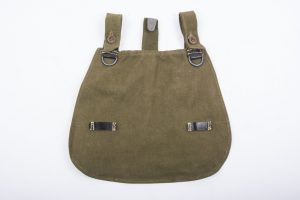
Mint M31 breadbag
M31 breadbag in mint condition. Excellent piece that would be hard to upgrade.
-
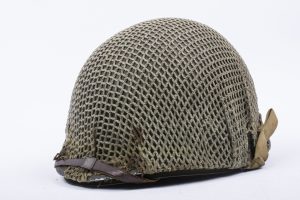
US M1 fixed bale helmet with period applied net
A great US M1 fixed bale with period applied helmet het in very good, lightly used condition. The McCord helmet shell retains most if not all of its factory textured paint and the period applied helmet net. The helmet comes with its original Westinghouse liner in very good condition named AB Vann on the exterior. The helmet is overall in great, lightly worn condition and the name would be a nice base for further research. Very hard to find a US m1 helmet with a period applied helmet net!
-
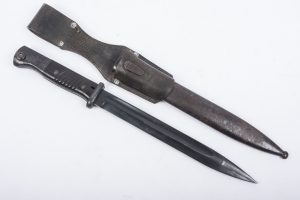
Matching K98 bayonet E.u.F. Hörster 1939
A very nice 1940 dated bayonet with leather frog. Nicely marked E.u.F. Hörster and dated 1939. The bayonet is matching and with most of its original blueing. Hard to upgrade 1939 dated matching bayonet with original pre war frog!
-

M31 canteen marked MKL 42
A very nice M31 canteen in near mint condition. All the parts are marked MKL 42 indicating production by Max Kamper, Lüdenscheid. The canteen comes with a very nice lightbrown leather strap. A rare to find maker, especially in this complete and near mint condition!
-
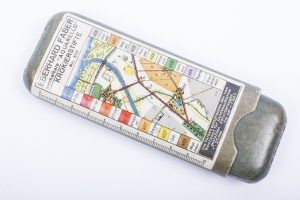
Rare map drawing pencils or Krokierstifte by Eberhard Faber
Rare paper case of third reich era map drawing pencils or Krokierstifte by Eberhard Faber. One of the hardest to find map case accessories. The case comes with a variety of pencils that where found inside the case.
-
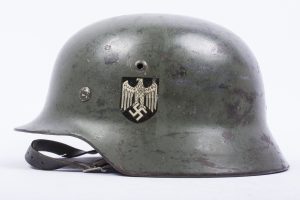
M35 ET66 Heer apple green double decal helmet
A very nice original double decal Heer M35 helmet in very good condition. The Heer decals still retains up to 95%. The helmet is marked ET66 indicating production by Eisenhüttenwerke, Thale. The helmet retains its original liner and chinstrap marked and dated 1938. The helmet is a very nice and typical example of a double decal Heer M35 helmet!
-
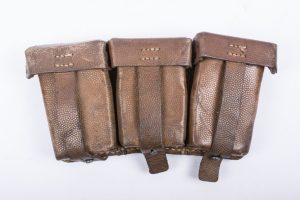
Lightbrown k98 pouch marked 0/0396/0027
A very nice lightbrown K98 pouch marked 0/0396/0027 with all dividers and undamaged.
-
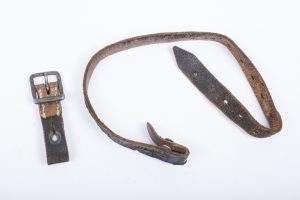
German helmet chinstrap G. Schiele Loburg
A very nice mid war chinstrap in good used condition. Very hard to find a used one to match with a used helmet. Nicely marked G. Schiele Loburg 1942.
-
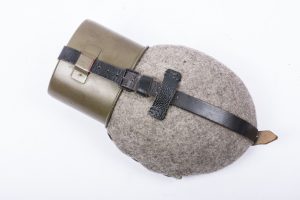
Matching M42 canteen marked CFL 43
A very nice matching M42 canteen with a black strap in good supple condition. Nicely marked CFL43 indicating production by Carl Feldhaus Aluminium-und Metallwerke, Lüdenscheid. Hard to find or upgrade M42 canteen with black leather strap!
-
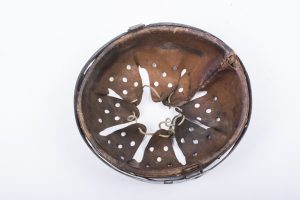
German helmet liner 62/55 Schuberth
Nice original German helmet liner marked Schuberth for a size 62 helmet shell.
-
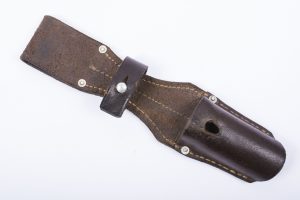
Pre war brown leather k98 bayonet frog
Nice unblackened example of a pre war K98 bayonet frog in very good condition. The frog is dated 1937 which is more obvious in hand and hard to photograph. The leather is supple and the hardware is all aluminum. Textbook pre war piece.
-
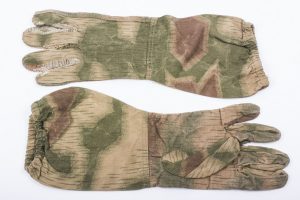
Heer/Luftwaffe Sumpftarn sniper gloves
A fantastic pair of Sumpftarn sniper gloves in lightly worn condition. These gloves show a nice patina and are perfect for a combat mannequin. The size is nice and medium to large.
-
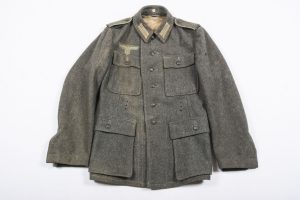
Italian wool Heer M43 EM tunic
A late war Italian wool M43 Heer field blouse in good used condition. The tunic is a nice large size fitting most if not all modern mannequins. The tunic comes with factory machine sewn Litzen, a restored breast eagle and a set of late war shoulderstraps with repaired tongues. Late war combat tunic in good used condition complete with shoulderstraps!
-
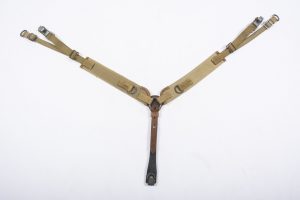
Y-straps manufactured from British webbing in Wirtschaftsamt Litzmannstadt
These Y-straps are made in the Ghetto of Lodz, Poland which the Germans renamed into “Litzmannstadt”. They are made using parts of captured British equipment items. These British equipment items where left in 1940 when the British Expeditionary Force evacuated to the United Kingdom. The Germans sent these for recycling and a lot of work was put in disassembling every British equipment piece and recycling the individual parts into German army equipment. Y-straps, breadbags, A-frames and rucksacks are a few of the items made in Litzmannstadt. A very rare pair of Y-straps!
-
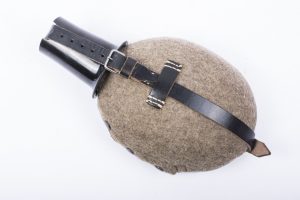
Mint M42 canteen marked SMM 45
A stunning M42 canteen marked SMM45 indicating production by Süddeutsche Metallwarenfabrik, Mussbach. The canteen is unissued and would be very hard to upgrade. 1945 dated items are very rare!
-
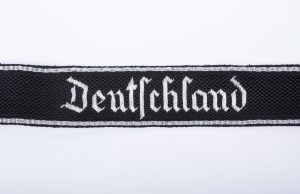
Mint Waffen-ss RZM pattern flatwire cufftitle Deutschland
Sale!Superb and textbook original RZM-pattern officers flatwire cufftitle for SS-Verfügungstruppe Deutschland. Nice early early RZM-pattern flatwire production with the Gothic style script. The cufftitle is in full length mint condition. Very nice original Waffen-SS cufftitle!
-
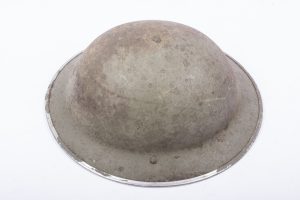
British MKII helmet
Very nice 1943 dated MKII helmet in very good used condition.
-

German helmet chinstrap in used condition
German helmet chinstrap in good used condition. Very hard to find a used one to match with a used helmet.
-
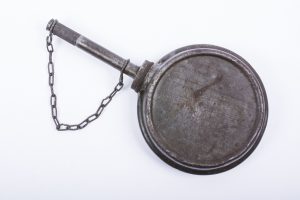
MG34 oiler marked Madler 39
Very nice pre war MG34 oiler marked Madler 39 in very good lightly used condition and its original wartime finish.
-
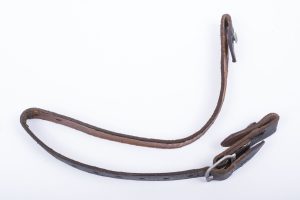
German helmet chinstrap R Ehrhardt Poessneck 1941
A very nice mid war chinstrap in good used condition. Very hard to find a used one to match with a used helmet. Nicely marked R Ehrhardt Poessneck 1941. The chinstrap is a nice early example with aluminum hardware. Perfect for a early helmet!
-
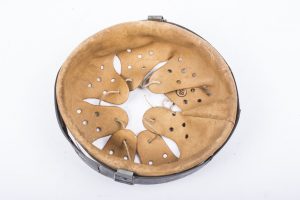
German helmet liner 60/53 1943 B&C litzmannstadt
Nice original German helmet liner marked B&C Litzmannstadt 1943 for a size 60 helmet shell. One of the rarest sizes to find!
Showing 14341–14400 of 17213 results


